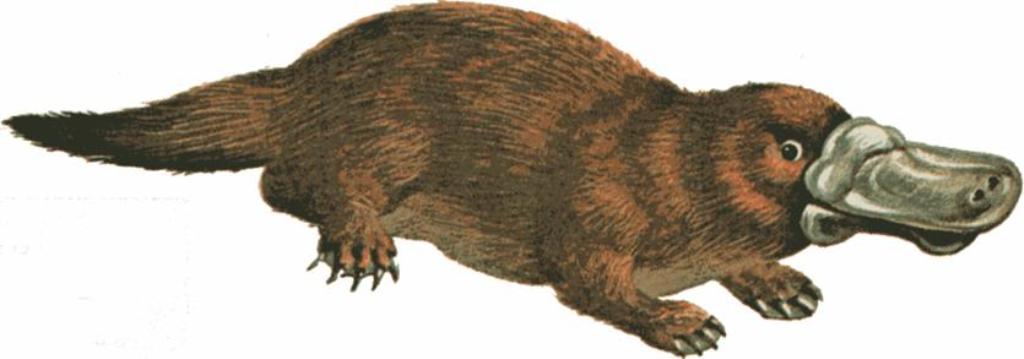History of... Platypus
Name:
Platypus
Scientific Name:
Ornithorhynchus anatinus
Family:
Ornithorhynchidae
Conservation Status:
Near Threatened
Habitation:
Freshwater creeks, slow-moving rivers, lakes joined by rivers, and built water storages such as farm dams.
Global Location:
Australia and Tasmania
Discovery:
First discovered in 1797,
The platypus is also sometimes referred to as the duck-billed platypus. It is a semiaquatic (living on land and in water), egg-laying mammal that lives in the wild in eastern Australia and Tasmania.
Together with the four species of echidna, it is one of the five species of mammals that lay eggs instead of giving birth to live young.
They have a streamlined body with a bill and broad flat tail; short limbs with webbed feet; dense dark brown to reddish brown fur with light brown/silver underfur. The bill is wide and flat like a duck. However the platypus bill is not hard like a duck's bill, it is soft and rubbery. It is covered with thousands of receptors that help the platypus detect prey.
The platypus has developed its hunting prey by electroreception. Its receptors are arranged in stripes on its bill, giving it high sensitivity to the sides and below. It can detect the slight electrical field that prey naturally emit and turns to catch the prey as it swims along in murky waters.
The platypus has a reptilian look with legs on the sides of the body, rather than underneath.
Platypus has a single breeding season between June and October. The males are polygynous and mate with several females. Females are mature at two years old. The male takes no part in raising the young.
After mating the female digs a deep, elaborate nesting burrow up to 20 m (65 ft) long, using leaves as bedding. Around eighteen days after mating the female lays up to three small leathery eggs, which hatch after about 10 days. Young platypus are called "puggles". Newly hatched platypuses are vulnerable, blind, and hairless.
The platypus mammary glands lack teats so the milk is released through pores in the skin. The milk pools in grooves on the abdomen, allowing the young to lap it up. After they hatch, the young are milk-fed for three to four months when they start to leave the burrow.
While both male and female platypuses are born with back ankle spurs, only the males produce venom. The venom is primarily used during the breeding season to fend off rivals, they can use the venom as a source of defence. The venom is strong enough to kill smaller species but it will not kill a human. It will deliver an excruciating pain that could last for several weeks, with hypersensitivity to pain lasting much longer.
Platypus fur gives a bluish-green biofluorescent glow in black light. This is normally seen in fish, reptiles and birds, but not normally in mammals.
In captivity, platypuses have survived to 17 years of age, and wild specimens have been recaptured when 11 years old. Mortality rates for adults in the wild appear to be low.
Natural predators include snakes, water rats, goannas, hawks, owls, eagles and crocodiles.
The platypus rests in a short, straight burrow in the riverbank about 30 cm (12 in) above water level, its oval entrance-hole often hidden under a tangle of roots. Sleeping up to 14 hours a day.
The platypus is a carnivore, feeding on annelid worms, insect larvae, freshwater shrimp, and crayfish that it digs out of the riverbed with its snout or catches while swimming. It eats about 20% of its own weight each day. 


